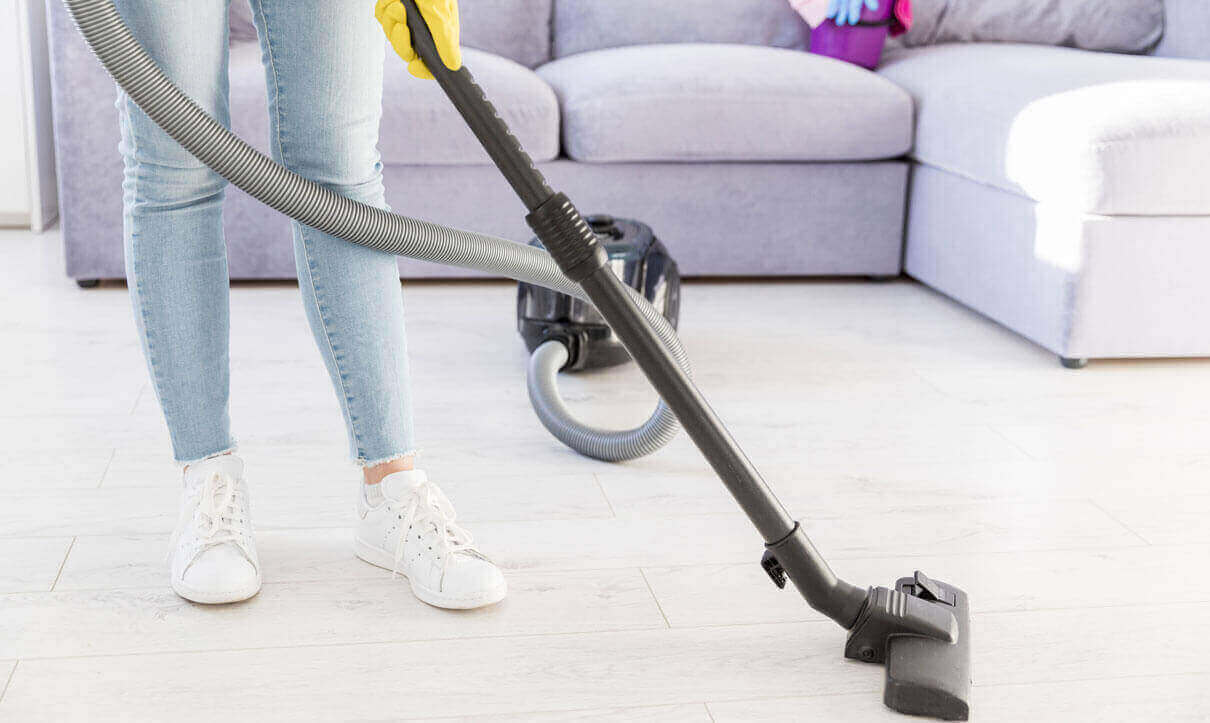Cleaning your floors effectively requires the right tools, techniques, and some helpful secrets to keep them looking fresh. Here's a guide to cleaning different types of floors and the secrets to making the process easier:
1. Identify the Type of Floor
- Wood: Hardwood or engineered wood floors need special care to prevent damage.
- Tile: Ceramic, porcelain, or stone tiles require different cleaning methods.
- Laminate: Laminate floors need gentle cleaning to avoid scratches.
- Carpet: Carpets need regular vacuuming and occasional deep cleaning.
2. General Floor Cleaning Tips
- Vacuum or Sweep First: Always start by removing dirt, dust, and debris. Sweeping or vacuuming will prevent dirt from scratching your floor when mopping.
- Mop with the Right Solution: Use a floor cleaner appropriate for your floor type. For wood, use a wood floor cleaner. For tile, use a pH-neutral cleaner.
- Use Microfiber Mop: A microfiber mop is excellent for trapping dust and dirt without leaving streaks. Avoid using too much water, as moisture can damage wood or laminate floors.
- Dry After Mopping: After mopping, go over the floor with a dry microfiber cloth or towel to prevent water from settling into the surface, especially for wood floors.
3. Wood Floors
- Avoid Water: Wood floors are sensitive to water, so use as little water as possible when cleaning.
- Use a Wood Floor Cleaner: Purchase a cleaner specifically designed for wood floors, or use a DIY solution of 1/4 cup of vinegar mixed with 1 gallon of water.
- Dry Mop: Use a microfiber dust mop for regular cleaning. For spills, wipe them up immediately with a soft cloth to prevent water damage.
- Deep Clean (Every 2-3 Months): Use a wood floor polish or wax to bring back the shine and provide a protective layer.
- No Harsh Chemicals: Avoid ammonia-based or harsh cleaners that can damage the finish.
4. Tile Floors (Ceramic, Porcelain, or Stone)
- Sweep or Vacuum Regularly: Regularly sweep or vacuum to remove dirt and prevent grout discoloration.
- Use a Mop with Hot Water: Mop with a mixture of warm water and a mild dish soap or a tile-specific cleaner. Avoid too much soap, as it can leave a residue.
- Tackle Grout Stains: For grout, use a paste of baking soda and water, or a dedicated grout cleaner. Apply the paste, scrub with an old toothbrush, and rinse well.
- Polish: To restore shine, use a floor polish specifically for tile or stone floors.
5. Laminate Floors
- Sweep or Vacuum: Keep laminate floors free of debris that can scratch the surface. Use a vacuum with a hard floor setting or a soft broom.
- Use a Damp Mop: Laminate floors don’t tolerate excessive moisture, so mop with a damp (not soaking) microfiber mop and a laminate floor cleaner.
- Avoid Harsh Chemicals: Don’t use wax or polish on laminate floors as it can cause a sticky residue. Stick to laminate-specific cleaners.
6. Carpeted Floors
- Vacuum Regularly: Vacuum high-traffic areas at least twice a week. Use a vacuum with a rotating brush or beater bar for deep cleaning.
- Spot Clean Spills Immediately: Blot (don’t rub) spills with a clean cloth. For pet stains, use a pet-safe cleaner.
- Deep Clean (Every 6-12 Months): Use a carpet cleaner machine or hire a professional to deep clean your carpets to remove deep-seated dirt and stains.
- DIY Carpet Freshener: Sprinkle baking soda over the carpet, let it sit for 15-30 minutes, and then vacuum. This helps neutralize odors.
7. The Secret to Streak-Free Floors
- Rinse After Mopping: If you're using a cleaning solution, make sure to rinse the mop frequently in clean water to avoid spreading dirty water across the floor.
- Use a Dry Mop or Cloth: After mopping, go over the floor with a dry microfiber cloth or mop to remove any leftover moisture and prevent streaks, especially on tiles and laminate.
- Use a Clean Mop: A dirty mop will leave streaks behind. Always clean your mop regularly, especially if it has picked up a lot of dirt.
8. Extra Tips for Special Floor Types
- Vinyl Floors: Sweep regularly, mop with a mild solution, and avoid excessive water. Use a damp mop with a mixture of vinegar and water to clean.
- Stone Floors (Granite, Marble, etc.): These floors require a pH-neutral cleaner. Avoid acidic cleaners like vinegar, as they can damage the stone.
9. Keep Floors Looking New
- Use Rugs or Mats: Place rugs or mats in high-traffic areas to protect floors from wear and tear.
- Furniture Pads: Use furniture pads under chairs and tables to avoid scratches.
- Quick Cleanups: Deal with spills or accidents immediately to avoid long-term stains or damage.
10. The Secret to Preventing Dirt Build-Up
- Shoes Off Policy: Consider a "no shoes" rule inside your home to reduce the amount of dirt and grime tracked in.
- Regular Touch-Ups: Don’t wait for floors to look dirty; give them regular cleaning attention to keep them looking pristine all the time.


